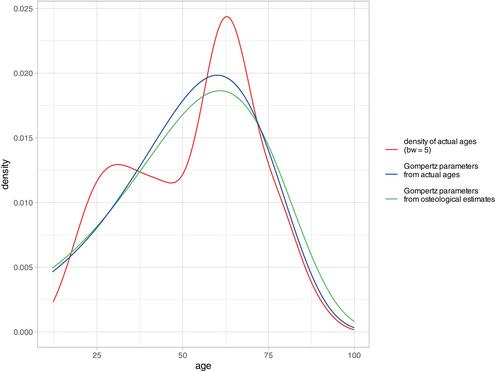Adult mortality in the metropolis of London 1100–1850: A Bayesian view based on osteological data
Abstract
Objectives
The present paper highlights the potential of osteological data for answering demographic questions through the development and application of a Bayesian approach incorporating age estimations of adults.
Materials and methods
The metropolis of London is a rewarding study region for such an approach due to the large number of cemeteries, with thousands of individuals, spanning a period from 1100 AD to the mid-19th century, that have been excavated and published in the past two decades. Furthermore, London has a rich tradition of early written records on mortality that can be used for comparison purposes. In order to gain comparable results from the different source categories, we use a Bayesian framework in which the Gompertz distribution features centrally.
Results
Our intensive simulations show that the Bayesian approach performs better than maximum likelihood estimation or ordinary least squares in terms of recovering the original age distribution parameters. They also show how strongly population growth affects mortality patterns. The osteological data suggests that during medieval times and the Early Modern period, the modal age-at-death of the general population of London remained more or less constant and hovered around 30 years, and that only monks showed a higher modal age, of about 45 years. However, from the 17th century onwards, life expectancy of adults increased markedly.
Discussion
Our comparison of written sources and osteological data demonstrates their general comparability and highlights the much higher mortality among adults in London than in the rest of England and Wales. We conclude that Bayesian modeling has great potential for recovering true mortality patterns from osteological data.


 求助内容:
求助内容: 应助结果提醒方式:
应助结果提醒方式:


